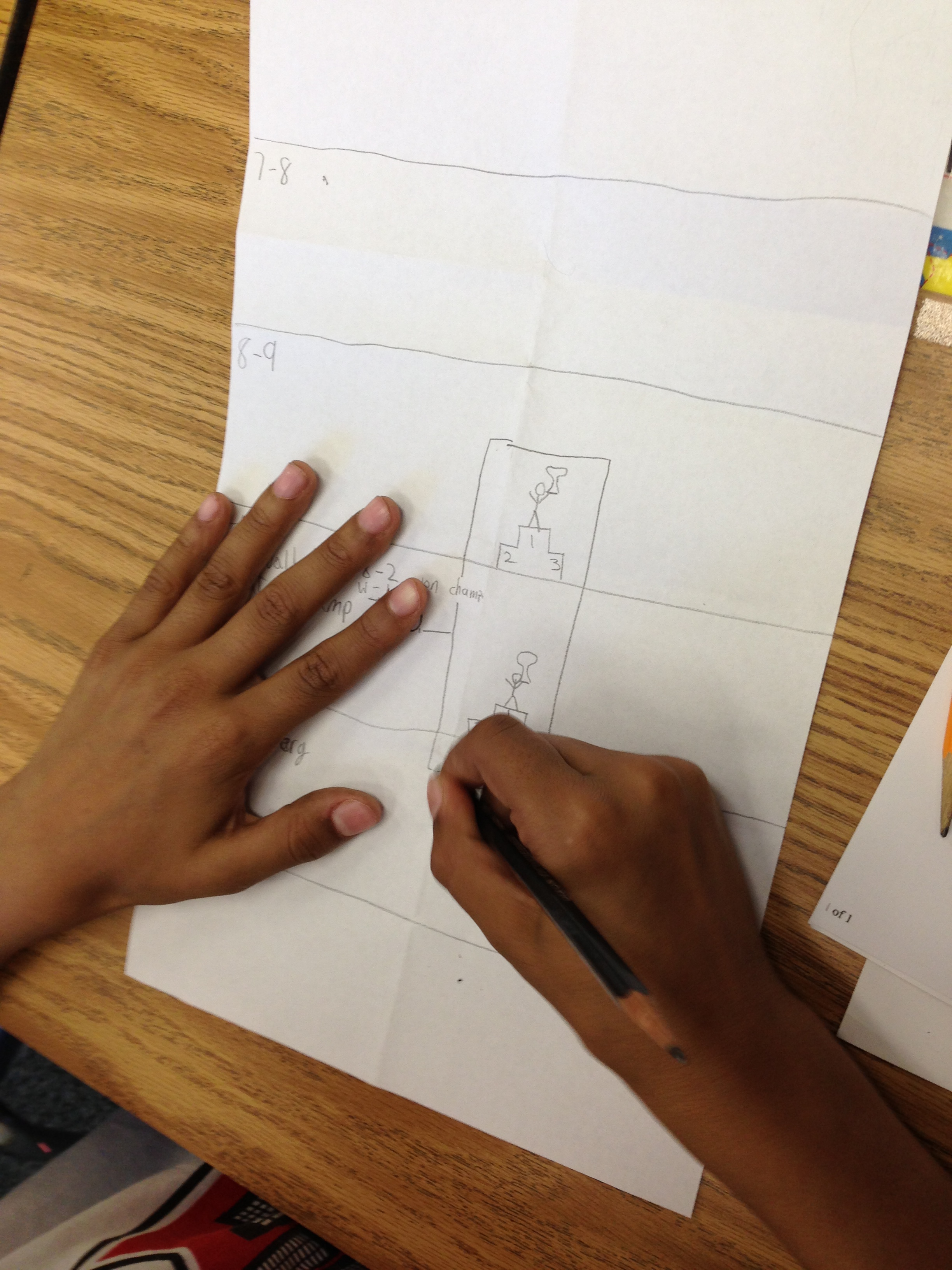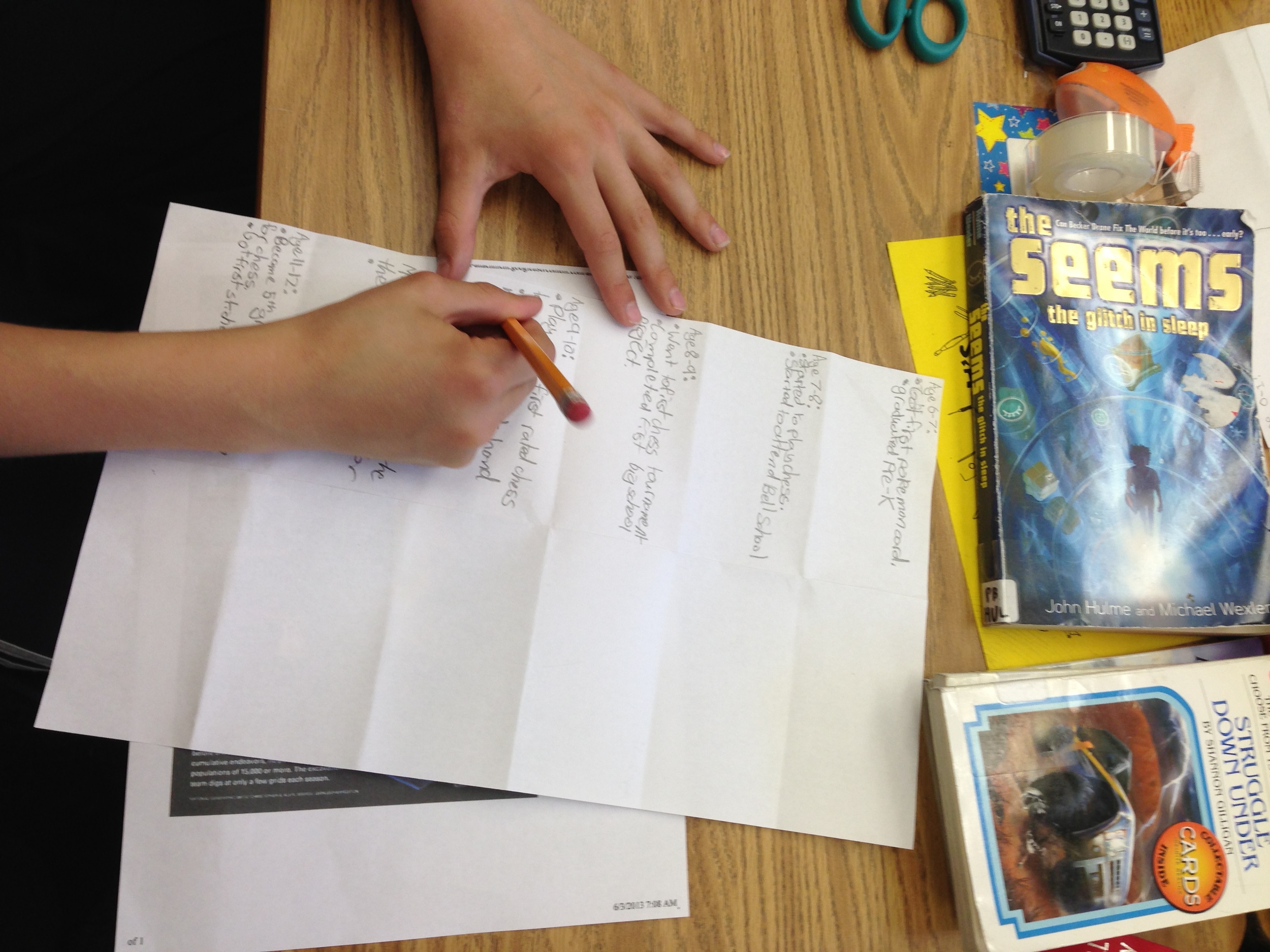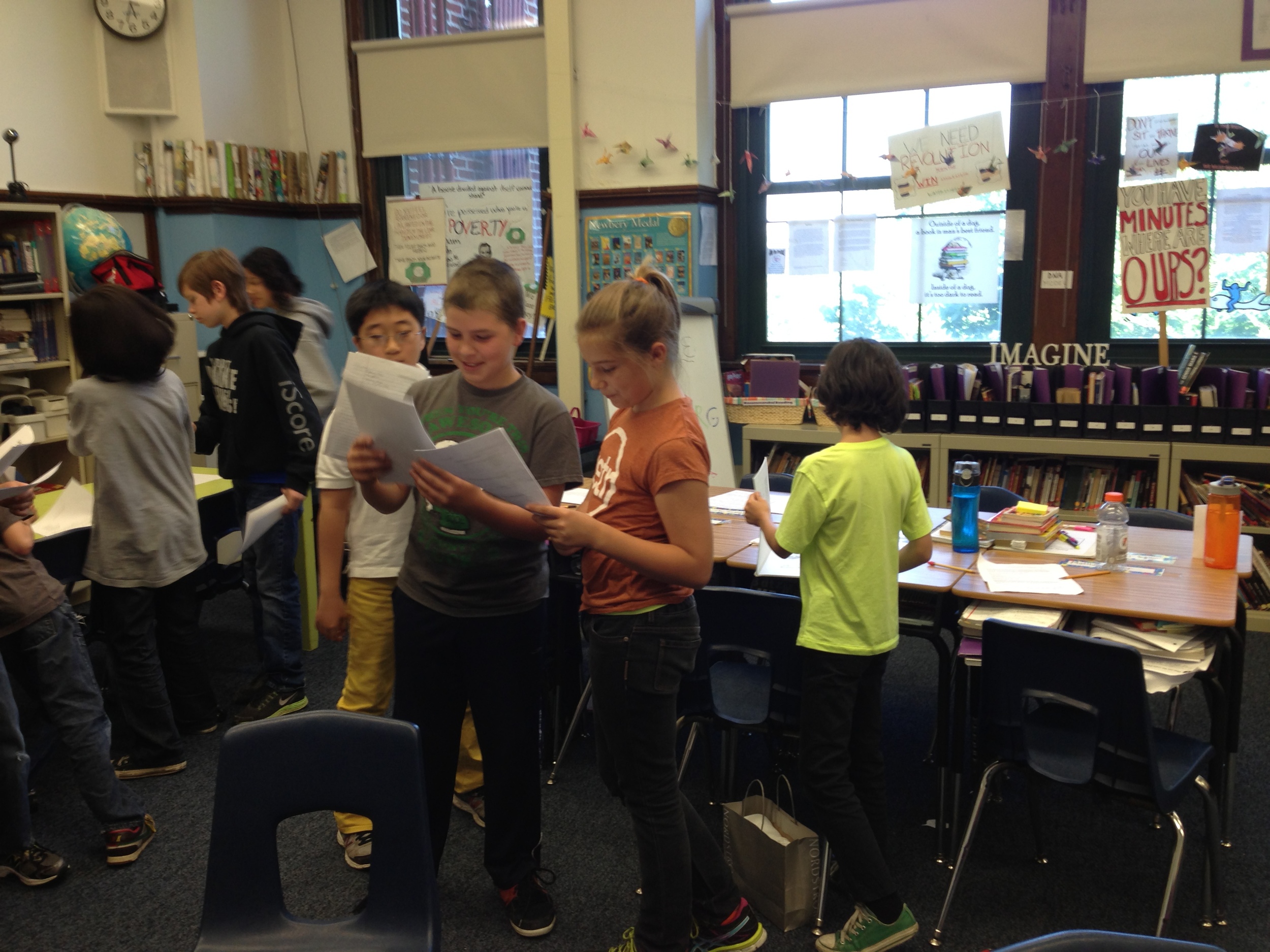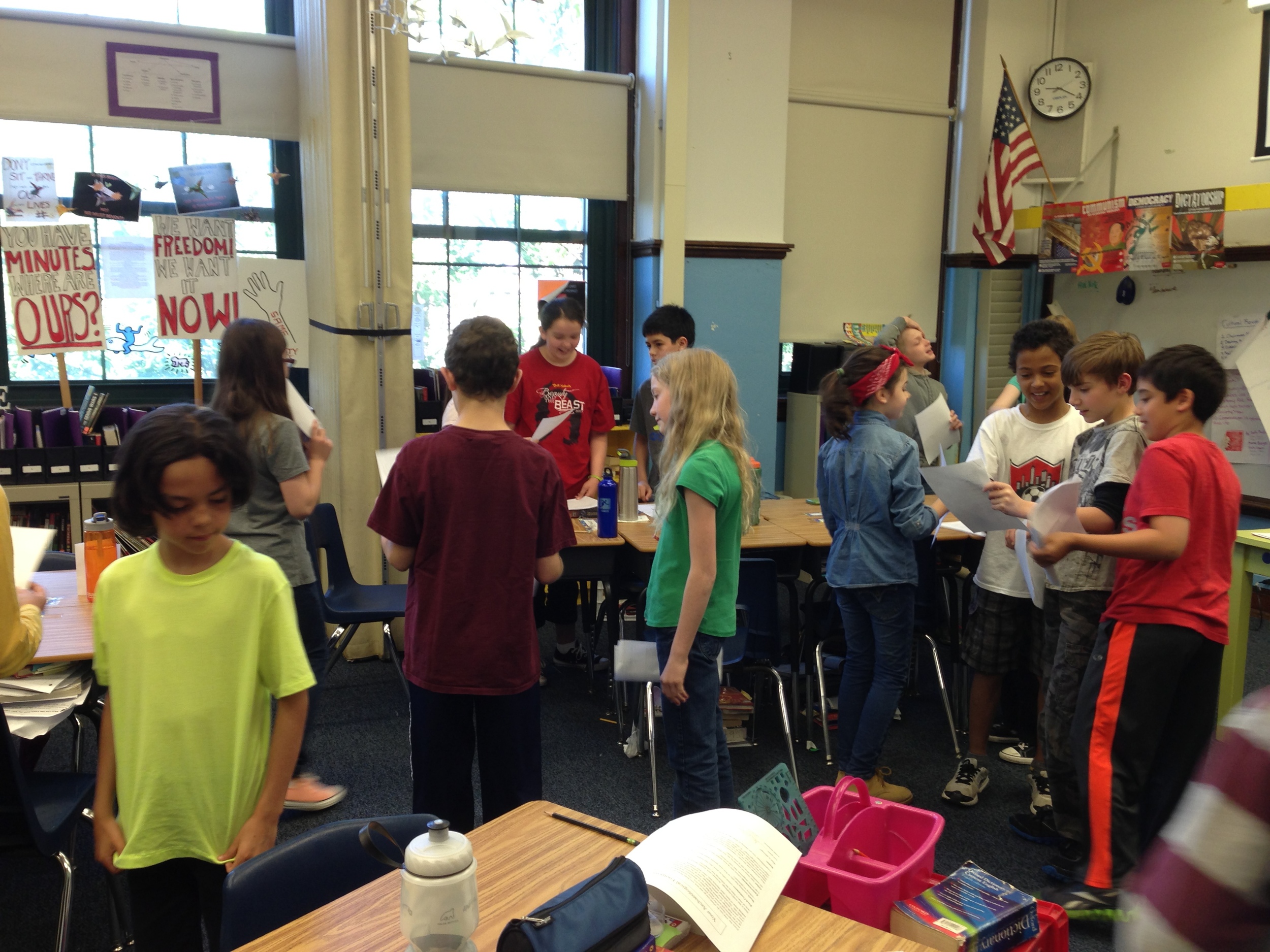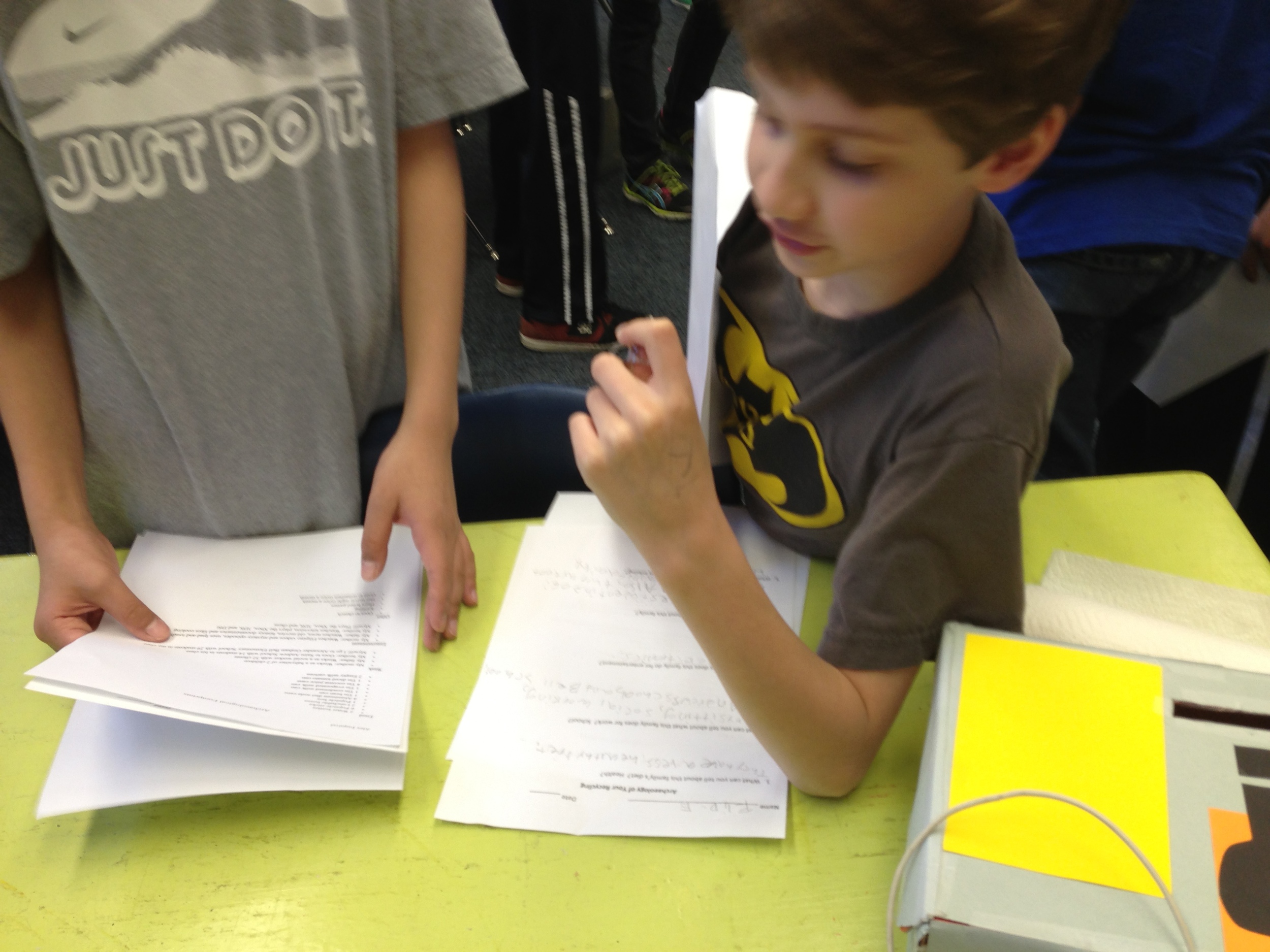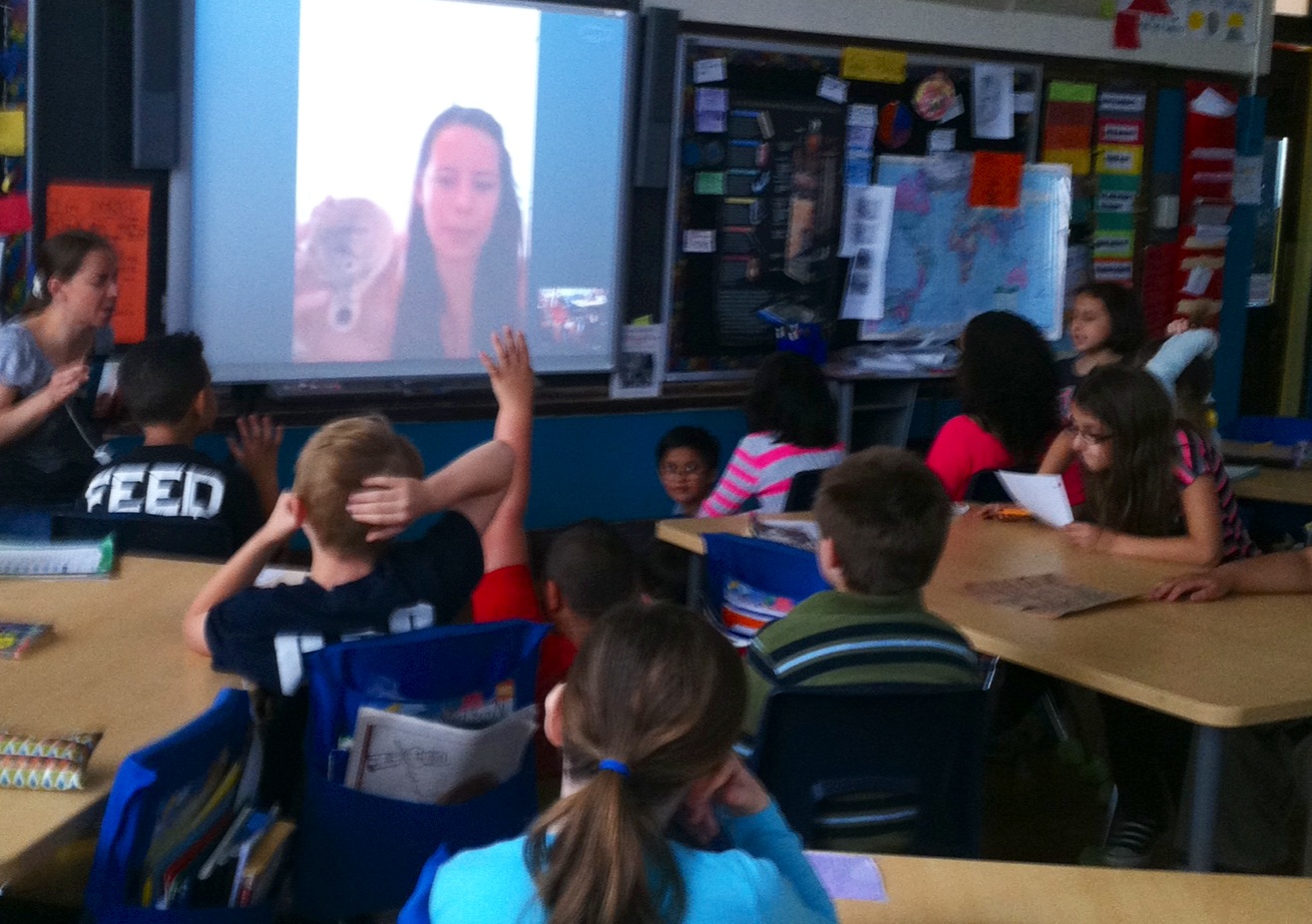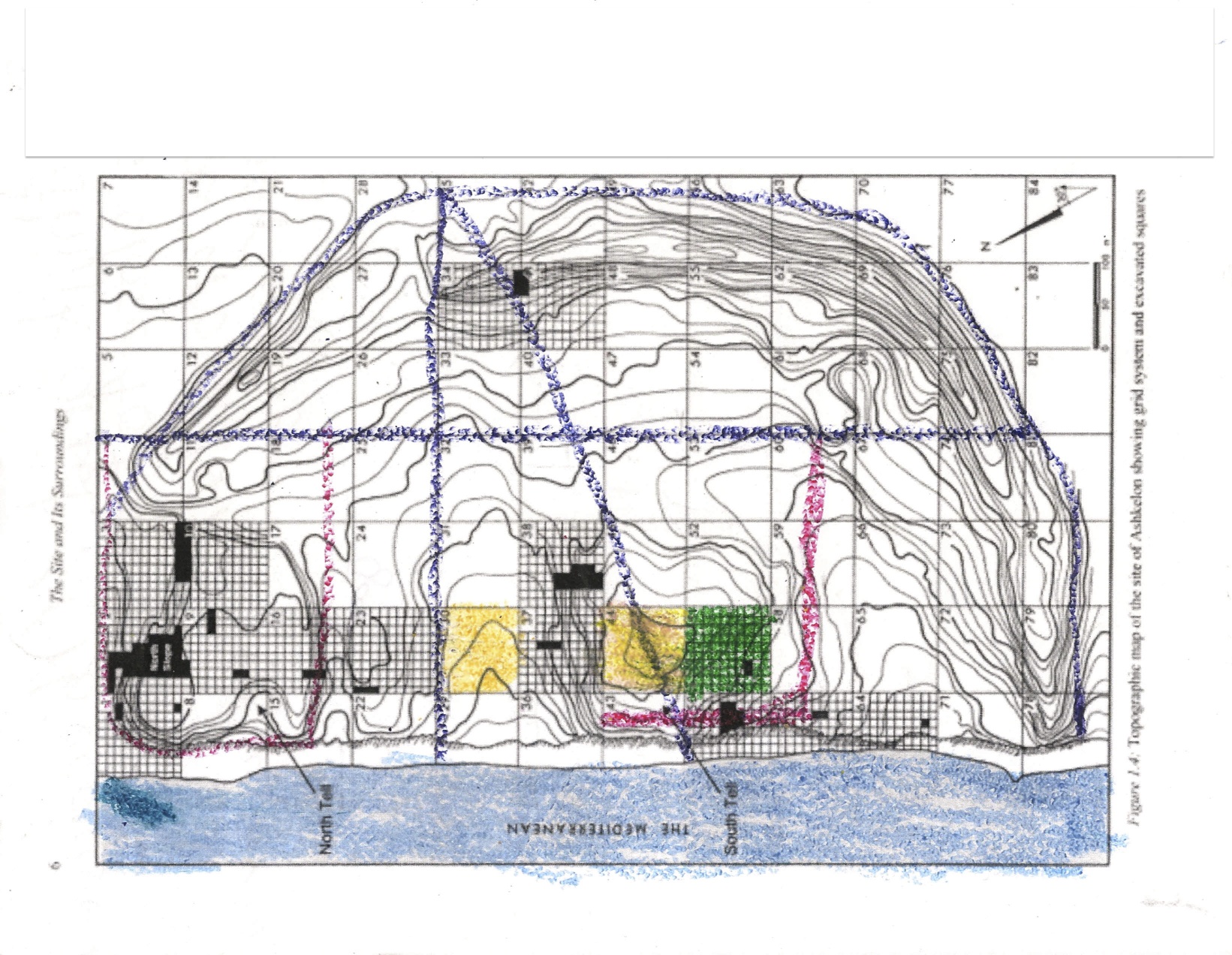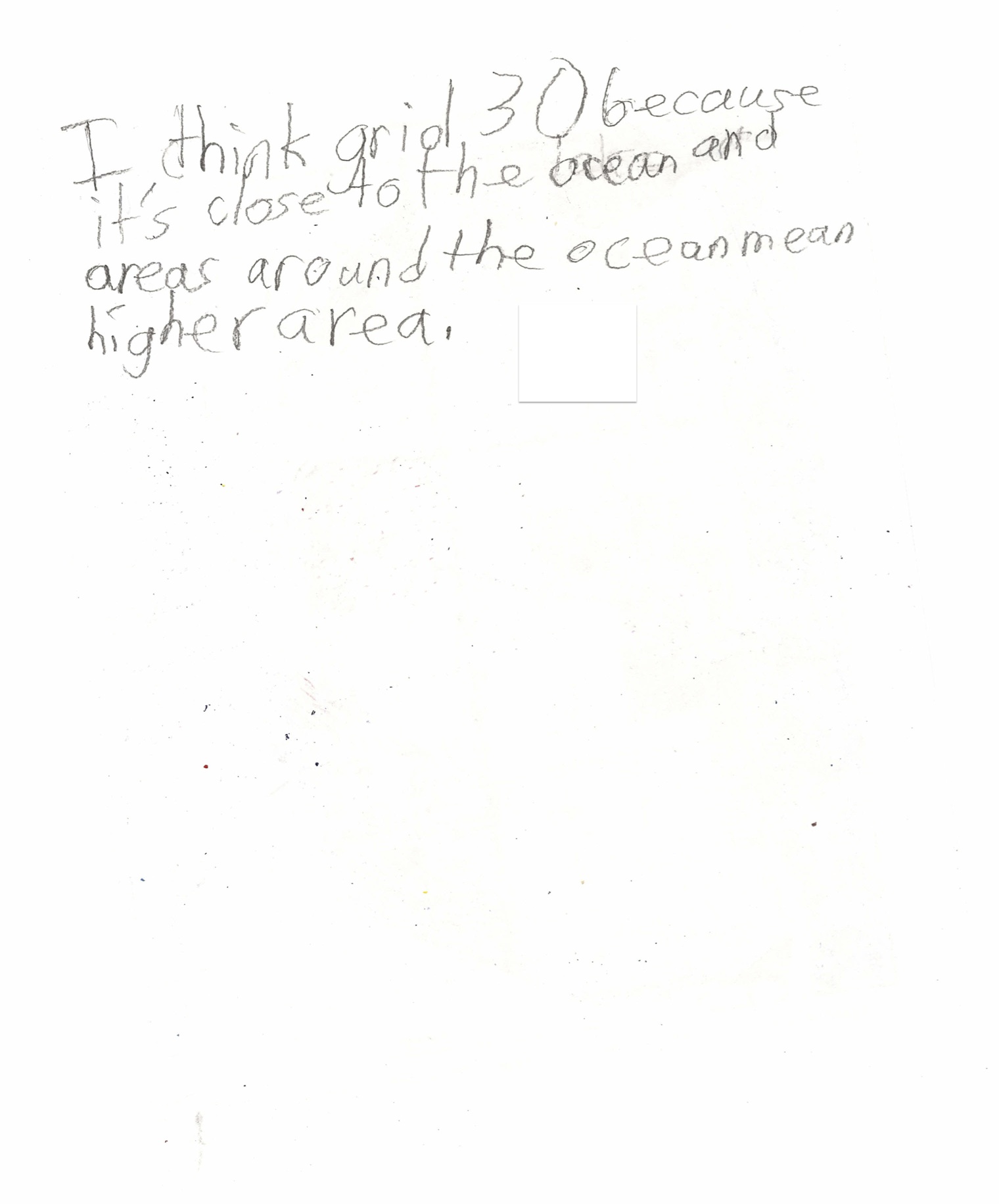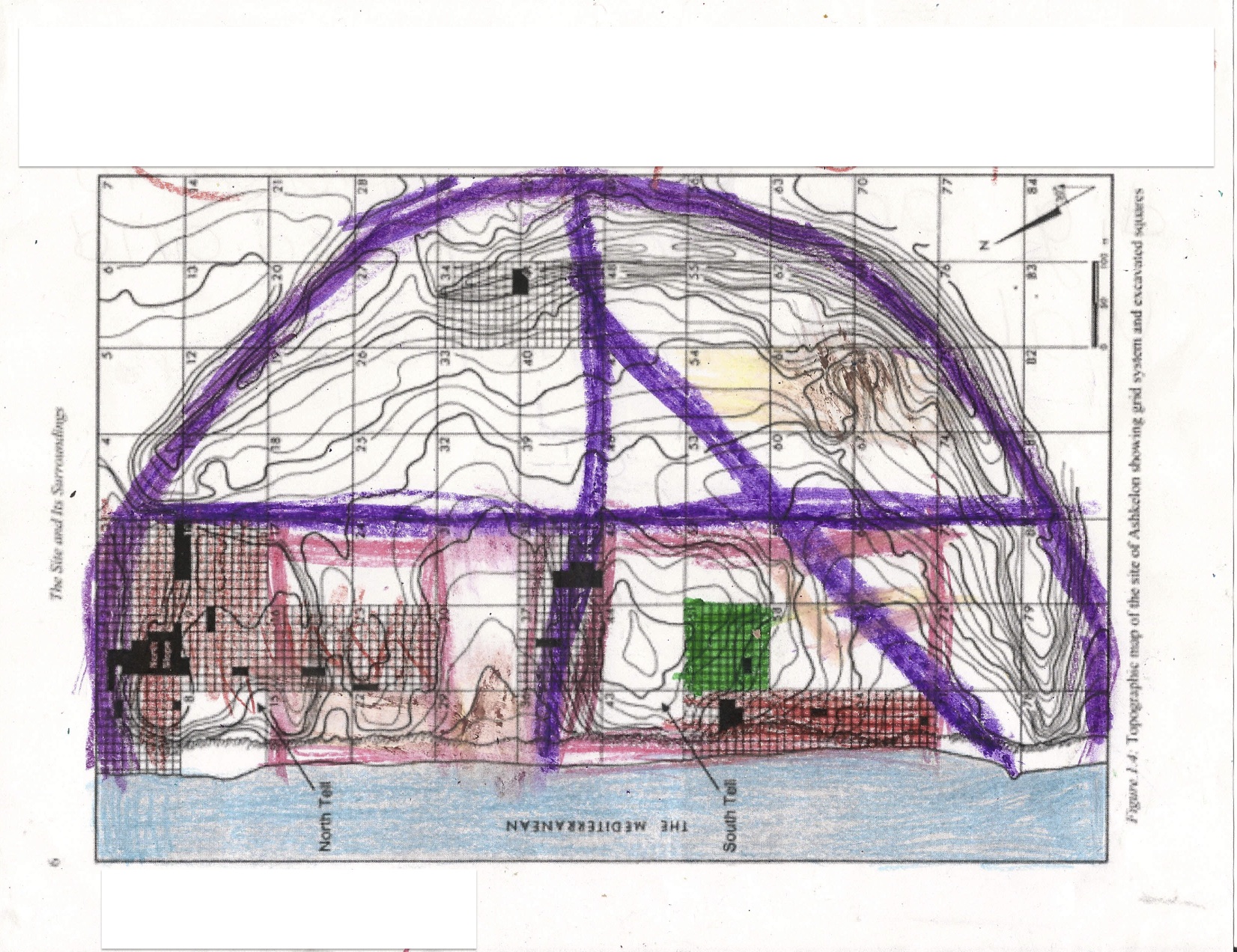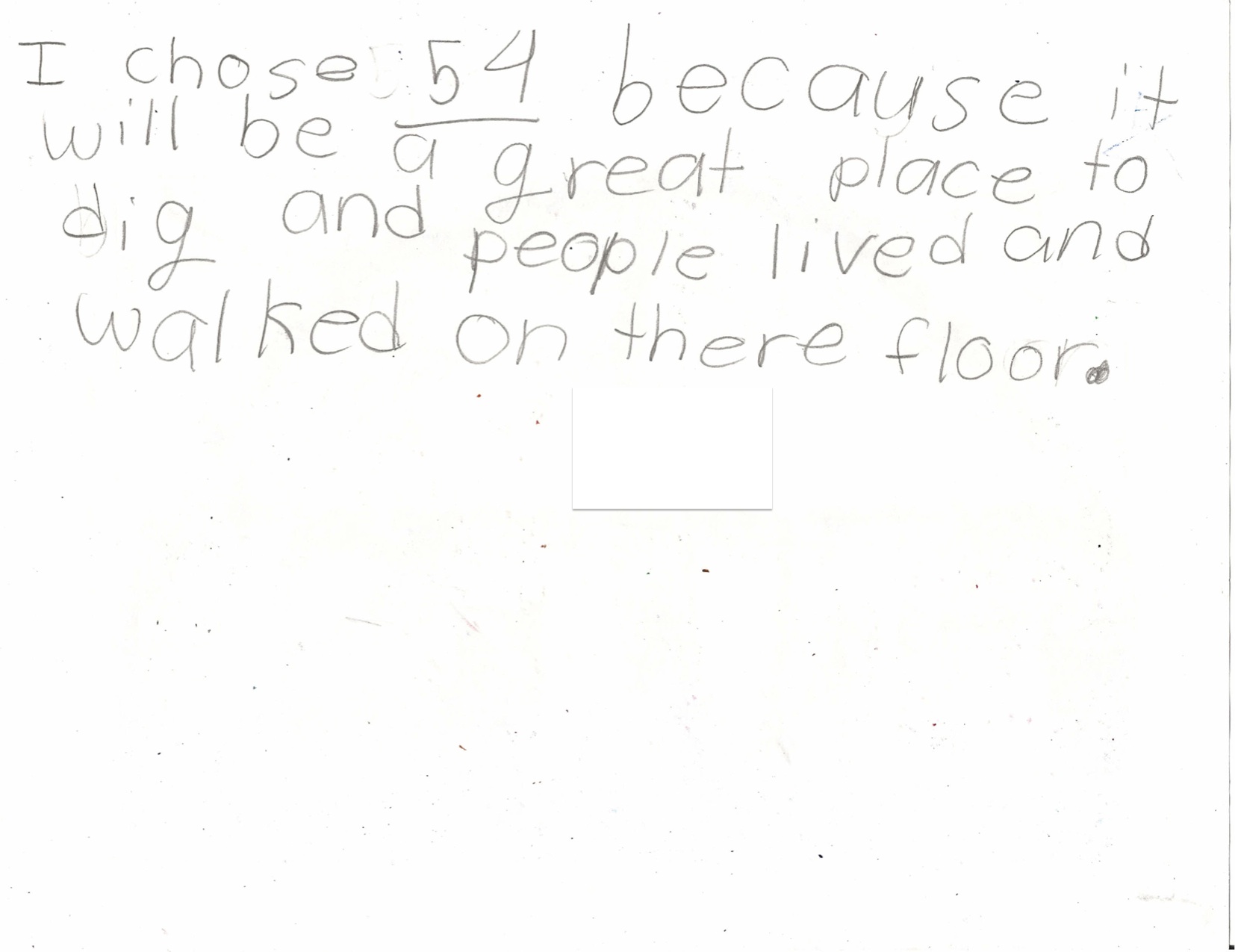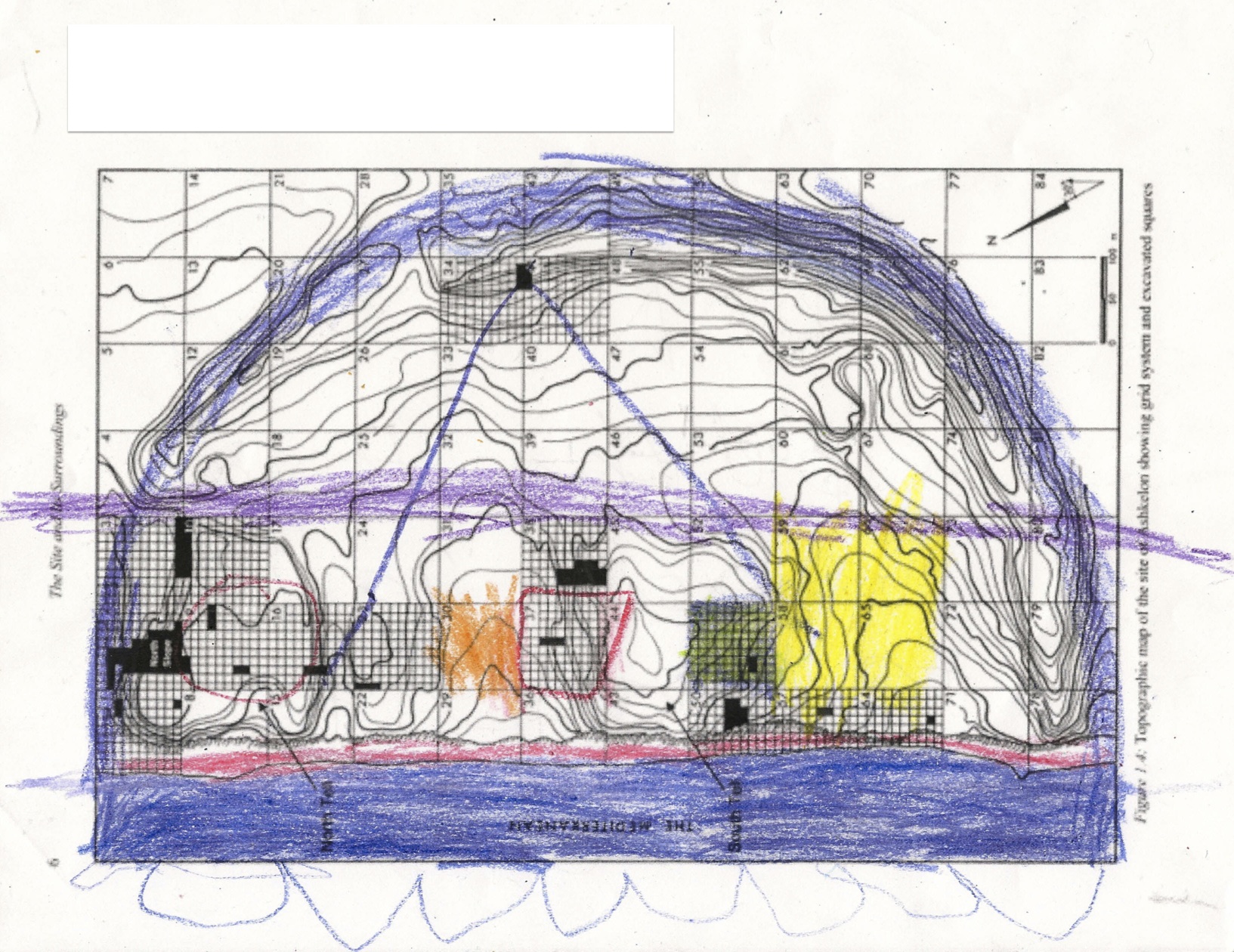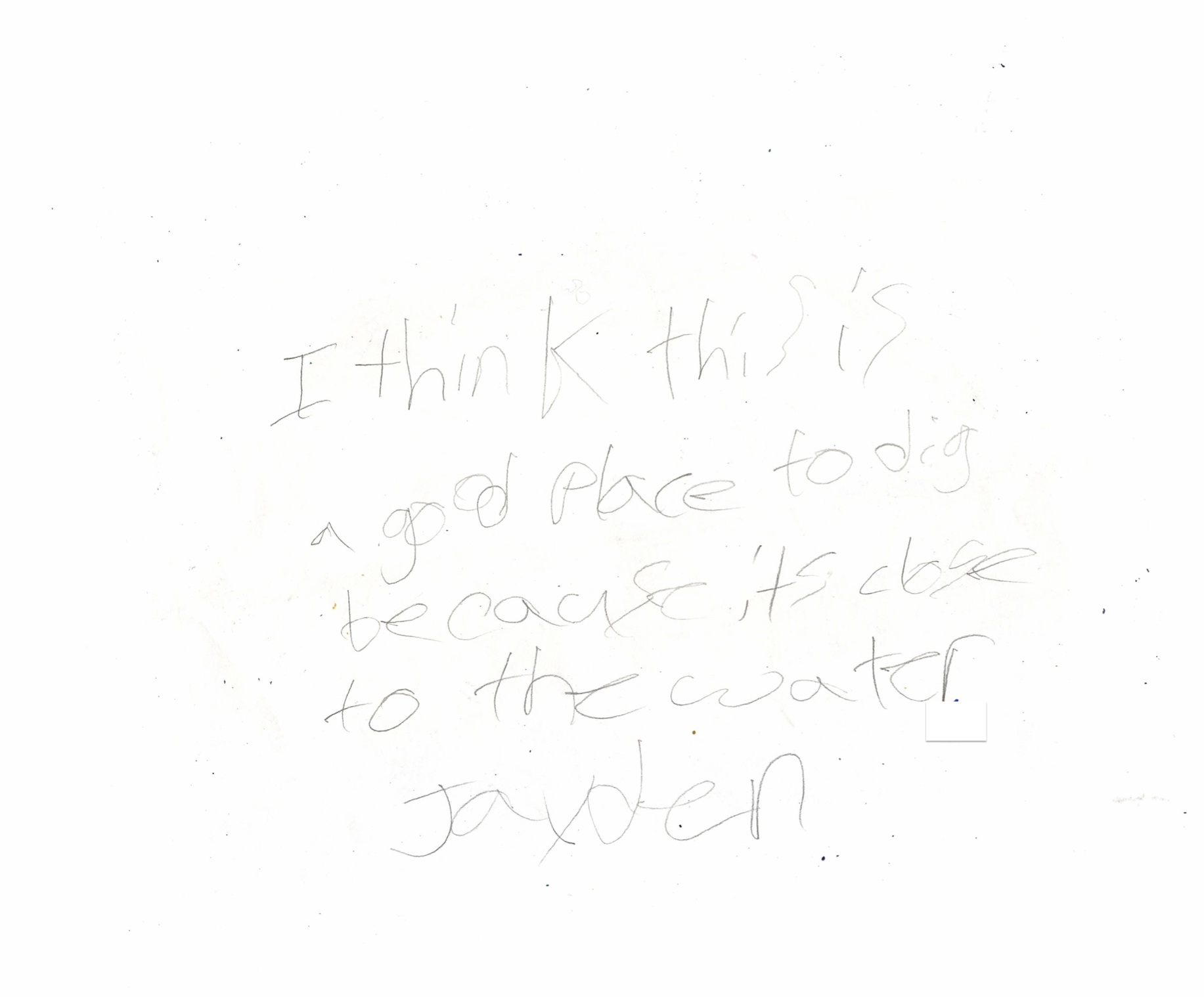Last week some of our classes Skyped with Archaeologist Robyn and discussed oil lamps found in Ashkelon. They focused on Roman oil lamps that were tied to Greek mythology. This discussion inspired many of our classes to create oil lamps of their own. Check out the variety of shapes and sizes in these oil lamps! If you are interested in learning more about oil lamps found in Ashkelon and in creating your own lamp click here!
A busy week in Chicago!
It was another busy week for our Skyping classes in Chicago. Several classes continued their conversations with archaeologist Tracy on life on the dig and in Ashkelon. The focus this week was on Theophanes in Ashkelon, what his documents tell us about his time in ancient Ashkelon, and how the records we leave behind can be used to tell the story of us. These classes analyzed receipts, planned a dinner using ingredients similar to Theophanes ingredients, and created entertainment tokens like the one Theophanes may have used to get into the theater in Ashkelon.
Another group of classes had the opportunity to talk with our Roman Archaeologist, Robyn about oil lamps in Ashkelon, there purpose, and design. These classes read Greek/Roman mythology and then identified lamps that depicted these stories. They designed their own oil lamps and looked around their community to see how stories were being depicted on objects they use in daily life.
All of the classes have been working on thinking like archaeologists and have been engaging in inferencing activities. I had the opportunity to participate in a great "Who is it?" activity with a K/1 activity. The students looked at objects in bags and had to determine the teacher in the school that was represented by the objects. They then made posters justifying their inference and presented them to the class. I will be posting a video of this activity soon.
I had the special privilege of getting to talk archaeology with an awesome class of third graders this week. It was totally impromptu and awesome. I bopped on up to their classroom to check out their awesome Ashkelon bulletin board and the questions started to fly. Below is a photo of me talking with the class along with photos of the students learning about the dig site through an interactive map. There are also photos of another group of students creating and then sharing their personal vertical timelines. Finally, there is a fantastic photo of Archaeologist Robyn skyping with a class. Because of her conversation, the class will be making oil lamps out of clay this week!
Thanks for all your handwork!!
Ashkelon Anthem
A class of 5th graders Skyping with archaeologist Tracy.
It has been a very busy week for our Skyping classrooms. They were challenged to research 5 famous historical figures with connections to Ashkelon and then present their research to archaeologist Tracy. Each class chose to present their work in a different way. One class opted to write a song and make a music video entitled the Ashkelon Anthem. Here are the song lyrics and check the video out here:
In addition to researching historical figures, another class worked on a challenge archaeologist Tracy and I presented on March 5. They looked at a topographical map of the site, drew in key features of the ancient cities of Ashkelon known by the archaeologists, and then, using this information, made predictions on what areas they thought might be good for excavating. Here are some examples of their work:
What to expect on the dig this summer
This year I am excited that my husband, Aaron, will be joining the team in Ashkelon as a volunteer. He got to hear about all of my adventures last year and now he gets to have a few of his own this year. To prepare for the trip Aaron sat down with Archaeologist Tracy to discuss what to expect, what to bring, and just get a general feel for what is to come this summer.
Bringing Ashkelon to Chicago!
Last week 6 classes in the Chicago Public School system began an awesome adventure with us here at the excavation in Ashkelon. For the next 5 weeks they will be Skyping (online video chatting) with archaeologist Tracy! The students will be learning about archaeological methodologies and processes, the ins and outs of the dig, the history of Ashkelon, and basically having a great time. The first week of conversations was VERY exciting for all of the students and Tracy. Here is video of a group of middle school students at the beginning of the conversation, later on this group, along with many of the other classes, were challenged with researching 5 historical figures who have connections to Ashkelon. When they chat with Tracy this week, they will share their findings and she will share this nifty comic book she made for them.
If you are looking for some great lessons to incorporate archaeology into your classroom instruction be sure to check out our lesson modules at www.digashkelon.com/modules.
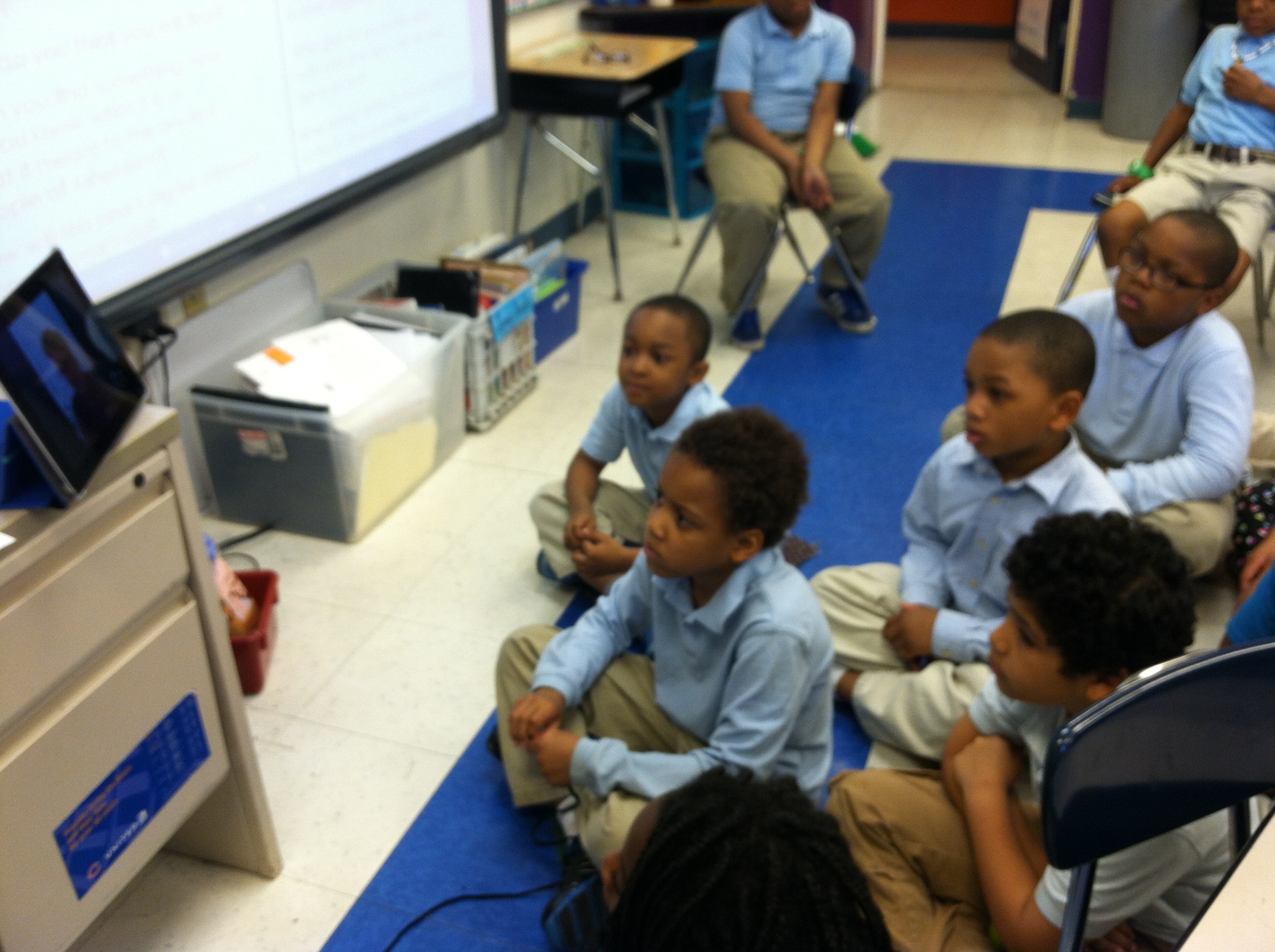


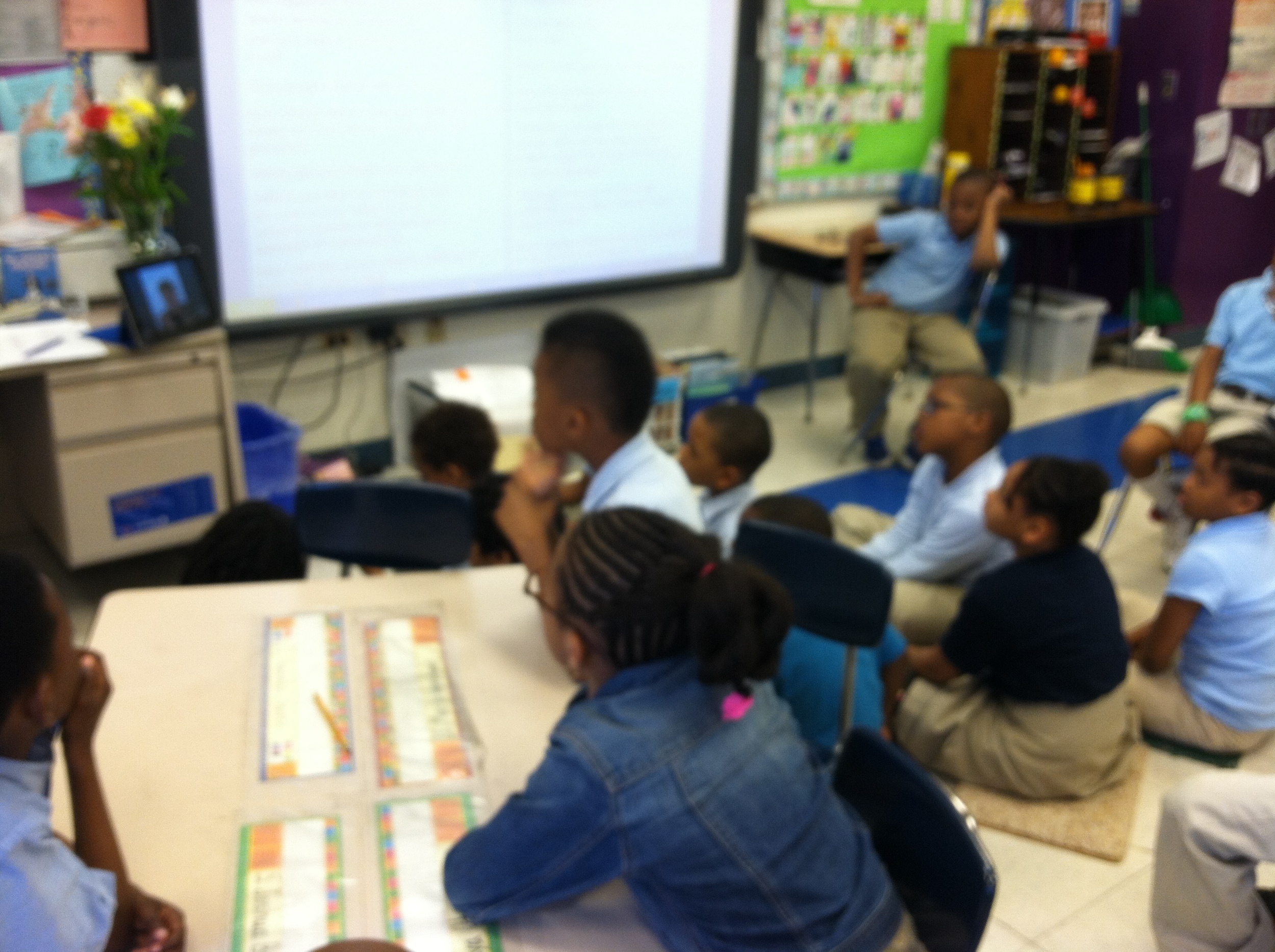
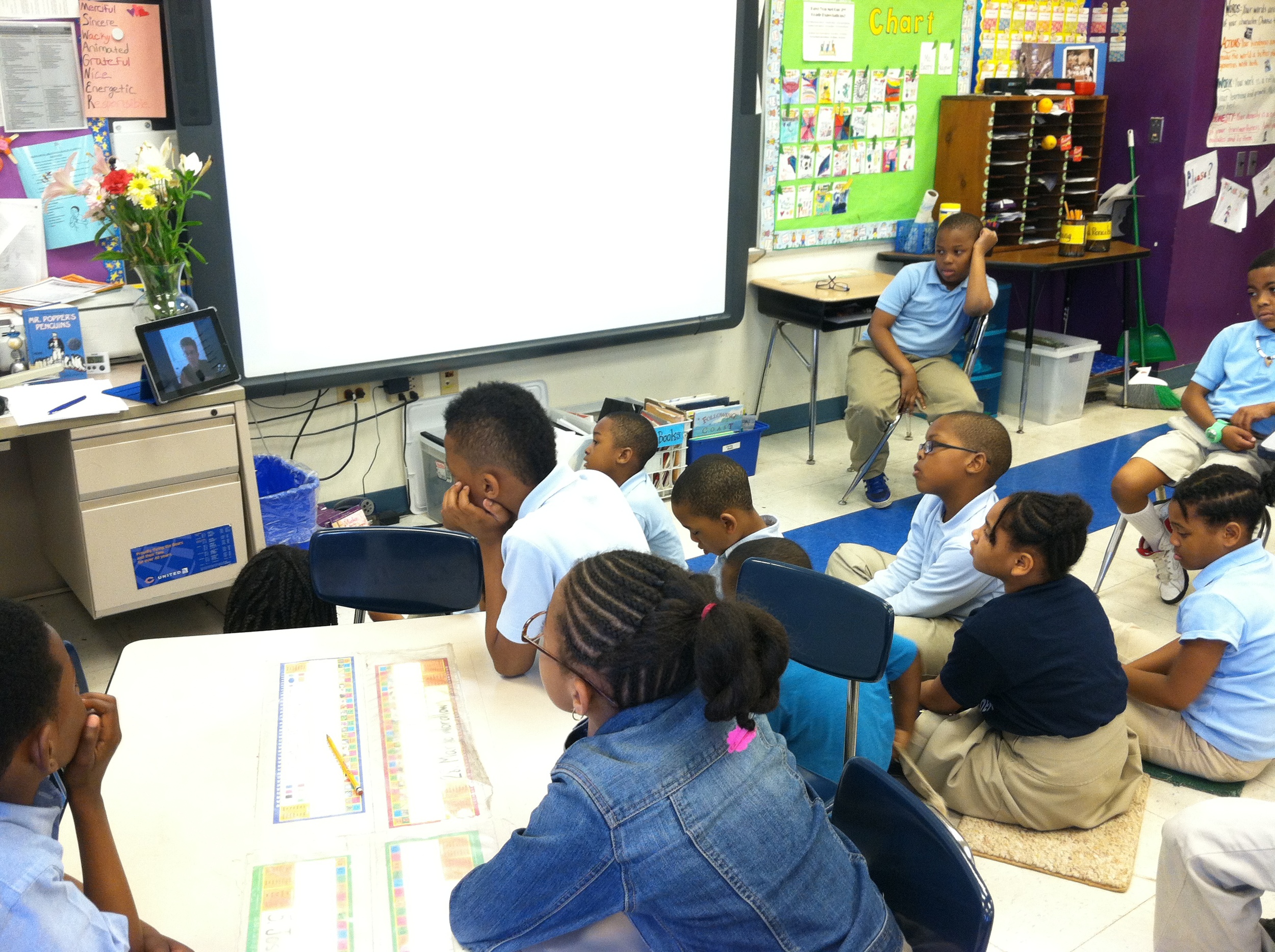




What might we find?
Today, archaeologist Tracy shares with us what she thinks they might find in the new area that is being opened this summer.
Junior Archaeologist Assignment: Look around your neighborhood and find examples of things Archaeologist Tracy mentioned in the video. Take photos of some of the things you think might still be standing if someone were to excavate your neighborhood in a 1000 years. Can you find anything that you think would not be here in 1000 years? Why do you think it won't be here?
Question of the day: Why do you think things like roads, walls, and floors survive thousands of years after being built? Does the material used to build these structures have any impact on how long they can stand? What building materials that we are using today would with stand time? What materials would not?
Welcome!
Kerrie and I had a great time meeting and talking with all of the teachers who attended the Collaborate Chicago event this past weekend. We loved your excitement about our project and we are ready to get some of your (and your students') questions answered! If you have a question for an archaeologist or a question about one of the videos, just respond in the comments section of this blog post. If you want assistance with lessons do not hesitate to e-mail us at nmoos@cps.edu or kabadalucco@cps.edu. We will have a great new video up later this week discussing what the archaeologists think they might find in the new area that is opening this summer based on the ground penetrating radar. Be sure to check back!
Ground Penetrating Radar
On my last post archaeologist Tracy made the exciting announcement that she would be opening up a new grid this summer, and she shared with us how they picked the spot that they were going to excavate. My question for her was, "After you pick the area you are going to excavate, how do you know where to start?" This week she shares one way archaeologists are able to determine where, in a chosen area, they should begin digging.
Junior Archaeology Assignment:
Alright friends, Archaeologist Tracy wants to where you think she should dig based on what she sees from the ground penetrating radar reading. Post the color name (green, red, blue yellow) that you think means "there is something here," why you picked that color, and what you think might be there.
Question of the Day: Why do you think archaeologists use technology like ground penetrating radar to assist them in knowing where to dig? How do you think archaeologists determined where to excavate before ground penetrating radar? Archaeologists are not the only people who use ground penetrating radar, when are other times you think people might use ground penetrating radar to help them with a task?
Exciting News!
Greetings Junior Archaeologists! I have taken a break from blogging the last few months as my preschoolers have been keeping me busy, but I am back and have a HUGE announcement about the archaeological dig in Ashkelon!
Junior Archaeologist Assignment:
Archaeologist Tracy showed us where she was going to be opening up a new area using a topographical map. A topographical map is a way to show high places (hills and mountains) and low places (valleys) on a flat map. Here is a link to the map archaeologist Tracy was looking at. Can you print it off and identify the features of the Ashkelon Dig site she discussed in the video? Can you find the sea? Grid 51 (where I dig!)? Can you find the high points? Can you draw in the roads and lines of the city walls? Thinking about what Tracy said regarding how they choose places to excavate (location to roads and height) what other grid do you think might be exciting to excavate?
**The image used by Tracy and linked here was originally published in Ashkelon 1. Click here to learn about the Ashkelon research publications.
Question of the Day:
Archaeologist Tracy said that 2 reasons people in ancient Ashkelon would build on a high place were that they wanted the view and the cool breeze. Can you think of some other reasons why someone might want to build on a high place?
Were the dogs pets?
One of the things zooarchaeologist Paula was trying to understand this season was what was life like for the dogs in ancient Ashkelon. Were they pets? Did they live in houses? Were the part of the religion in Ashkelon? Here she tells us what she knows now about the dogs and how the dog skeletons helped her to learn about life for the ancient dogs of Ashkelon.
Junior Archaeology Assignment
In the video Paula talked about how diseases made the bones in the dogs sick and made them weaker. She said she could see the places the bones were sick when she looked at the skeletons. Here is an experiment to see what happens to sick bones. Take 2 chicken bones, put one in a cup of vinegar and watch how it changes compared to the bone that is not in vinegar. The vinegar is like the diseases that the Ashkelon dogs have and makes the bone weaker. E-mail me pictures of you performing this experiment and your thoughts on the bone in vinegar and the one out of vinegar at nmoos@cps.edu. I will post them on the blog!
Question of the Day
If these dogs were not pets, when do you think dogs began to become pets that lived with people?
More Ancient Dogs
In today's video zooarchaeologist Paula tells us about what time period the dogs were found in and what she knows about the dog by looking at its skull.
Junior Archaeologist Activity
Paula is able to look at animal skulls and determine what animal it belongs to. Can you do the same? Here is a link to a game that tests your ability to match skulls with animals. Good luck! Post in the comments section how you did! I can't wait to hear about the fun you will have.
Question of the Day
What parts of the skeletons do you think are important for Paula to look at in order to identify animals?
Update
on 2012-07-24 06:13 by Nichole Moos
You are right on Nina! Every dog skull is a little different and Paula is able to tell us information about the dog by looking at its skull. She also looks at the dog's bones to tell about the type of life it had. Was the dog sick? Did it hurt itself? This information helps her to understand the story behind the dogs of Ashkelon.
Ancient Dogs
The digging season in Ashkelon is over, but the staff is still here finishing up projects and writing. One of the big projects that was finished by the zooarchaeologist in Ashkelon this year was the processing of the ancient dogs. The ancient dogs of Ashkelon were discovered 15 years ago. It is the largest dog burial ever found. Here Paula, the zooarchaeologist, shares one of the puppy skeletons with us. Over the next few days I will share more videos of the dogs and what we have learned about them because of our work this summer.
Junior Archaeologist Assignment
Look around your home, what things in your home have bones? Can you draw what you think the bones look like in the living things in your home?
Question of the Day
Why do you think so many dogs were buried near Ashkelon?
Junior Archaeology Assignments Week 5
2 Junior Archaeologists found something in their home that is made of stone and grinds! Great find!!
Ashkelon Rocks!
Today was the last day at the dig site. We spent the morning sweeping and taking photos of all of our hard work. Then we took down a couple of walls and locked up the grid until next summer. Earlier in the summer Nathan asked about the sorts of rocks we find here in Israel. Geologist Dave went through the rock collection and pulled out some of his favorites to share with you all. Here you go!
Junior Archaeologist Activity
How is stone used in your life? Do you have stone in your house? outside of your house? Is stone used in an interesting way in your neighborhood? Take pictures and e-mail them to me at nmoos@cps.edu and I will post them on the blog!
Question of the Day
What other things do you think rocks might have been used for in Ashkelon? Can you think of other uses for rocks in your home and neighborhood?
Philistine House
It is the end of the digging season here at Ashkelon, and I wanted to share with you some of the neat things that have been discovered in other grids. In Grid 38 they uncovered an ancient Philistine house. The Philistines were people who lived all around Israel 3000 years ago. Archaeologist Adam wanted to share the house with you!
Junior Archaeologist Assignment
Adam wants to know how the rooms in your house are connected. Do they share walls? doors? How do you get from one place to another in your home? Draw a map of the rooms in your house and e-mail it to me at nmoos@cps.edu and I will share it with him. I will also post it on the blog!
Question of the Day
Why do you think the house had a built in bench? What do you think the shells on the floor near the bench were used for?
Symbols
When I travel in Israel most signs are written in 3 languages English, Hebrew and Arabic. Here are a couple of signs I have seen while driving in Israel:
A road sign telling me where different towns are located. At the top is Hebrew, then Arabic, and at the bottom is English.
This sign is in Arabic and English.
These modern times signs show us that people in different parts of the world write words in different ways. They use different symbols to say the same thing. The same was true in ancient times. Here is a video of archaeologist Josh showing us a symbol on a store jar handle.
This store handle was found right by the loom weights. Here is a link to that video in case you have forgotten!
Junior Archaeologist Assignment
Can you create your own symbol system (or alphabet) and write your name? Maybe the letter F can be represented by a flower or the letter N by a nut. Take a picture of your symbol system and your name and send it to me at nmoos@cps.edu. I will be sure to post it on the blog!
Question of the Day
Josh said that the meaning of the symbol is unknown. What do you think the symbol on the jar means? What do you think the archaeologists here can do to determine the meaning of the symbol on the jar?
Taboon!
As the dig is winding down, we had our last digging day today, we have begun to take out some special items that we found during the season. One of those items is an ancient oven called a taboon. Here is archaeologist Mark to tell you about it.
Here is a picture of what a modern time (remember modern time is what you live in!) taboon looks like.
Like Mark said, the bread dough is slapped on the inside of the oven to cook. While it looks different then the one we found in Grid 51, it is still used the same way!
Junior Archaeologist Assignment
One of the tastiest things to eat in Israel is bread called Taboon bread! It is made in a modern day taboon like the one you see above. Can you make taboon bread at home? Here is a recipe for you to make (with the help of your dad/mom). Great news, you don't even need a taboon; you get to make it in a frying pan! Make sure you take pictures of you making the bread and e-mail them to me at nmoos@cps.edu, and I will post them on the blog.
Question of the Day
What other sorts of things do you think were cooked in taboon ovens?
Update
on 2012-07-18 13:42 by Nichole Moos
Hi Miss Kerrie!
I am working on editing the Dr. Hoffman video and will be posting it next week! Thanks for following our adventures!
Lions Tooth!
A few days ago, Ms. Tracy found a lion's tooth in her grid. I went and talked to the bone expert, Paula, to learn about it and lions in Ashkelon. Here is what she had to say!
Junior Archaeology Assignment
Several weeks ago I posted a video about a sheep-goat tooth. How is this tooth like that tooth? How are the 2 teeth different? Look in the mirror at your teeth. Can you find the tooth in your mouth that is like this sharp lion's tooth?
2 great books to read about teeth are: Whose Teeth are These? or Amazing Animal Teeth! Can you find teeth in those books that are like the lion's or sheep-goat's teeth?
Question of the Day
Why do you think I visited the bone expert to learn about his tooth? Why do you think there are not lions in Ashkelon anymore?
Update
on 2012-07-18 14:01 by Nichole Moos
Right on Oliver!
Boats!
On my field trip away from Ashkelon I visited a museum that has an ancient fishing boat. The boat is over 2000 years old! I was lucky enough to get to talk with the archaeologist, Jerome Hall, who has been studying the boat and restoring it. Jerome is a marine/underwater archaeologist and when I saw him he was looking at how the boat was made so that he can share what he knows with other archaeologists. Here is a video of him talking about the 2000 year old fishing boat.
The metal you see around the boat is not part of the original boat. This was created to display the boat in the museum. It makes it so all sides of the boat can be seen, even though people can't get too close to it.
Junior Archaeologist Assignment
Archaeologist Jerome said he is looking at mortise and tenon joints. In particular he is looking at the pegs that hold the joints together. Here is a picture of a mortar and tenon joint:
The skinner piece of wood is pushed through the opening and a wooden peg is pushed through the hole to hold the 2 pieces together. Can you look at objects in your house, like furniture and drawers, to see if you see any mortise and tenon joins? Does anything have wooden nails? If you have a boat at your home, look at how it is held together. Do you see wooden nails or mortise and tenon joints? Take pictures of what you see and I can post them on the blog (e-mail me at nmoos@cps.edu).
Question of the Day
Do you think if this boat were put on water now it would float? Why/why not?
Cliff Castles
I am on day 2 of my away from Ashkelon adventure, and I have been visiting places that have things that we do not have at Ashkelon. In order to do that I am visiting places that are not as old as Ashkelon. Today I visited a place called Nimrod's Fortress, a big castle like building built on the top of a hill. While at the fortress, I noticed this interesting long, skinny hole in the corner of a room. My friend Lucy is standing near it.
Yesterday when I was at a cave castle at the Arbel Cliffs I saw the same thing. Here is a video:
What do you think this long opening is for? Remember, I am looking at old castles!
Junior Archaeology Assignment
The castles I am visiting are made out of rock. Can you build something out of rocks? Is it easy or difficult? Take a picture and send it me at nmoos@cps.edu.
Question of the Day
Both of the castles I visited were built high up on hills and into cliffs. Why do you think castles were built up high or into cliffs?
Update
on 2012-07-15 14:12 by Nichole Moos
Hi Friends!
Here is one of the friends who went on my field trip with me explaining to you what those holes were used for.
Those holes are called loopholes and are places that arrows were shot out of. They are skinning on the outside making it hard for enemies to shoot arrows into the castle and wider on the inside so that people inside the castle had room to shoot the arrows. The windows are about 4 feet tall and 4 inches wide on the outside. The places that I visited had already been excavated, and they have been restored (cleaned up and made to look like it did back when it was originally built). So, I am not discovering/finding anything for the first time, but I am seeing what other people have found. At each place I visit, when I enter they give me a map to follow so I can make sure to see all of the cool stuff that they have found. I will make sure to show the maps to you when we start school in fall.
Great thinking on why you might build a castle up on a hill. You are all right as to why they built their houses on hills. Would you like to live on a hill?
The castle on the hill I went to was called Nimrod Fortress and we saw where a moat once was, where the drawbridge was, towers, where they kept their water and secret tunnels. At the castle in the cliff, we saw different rooms and lots of stairs.


